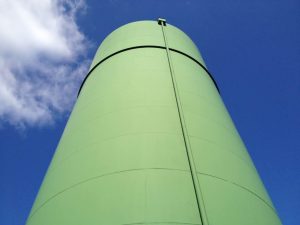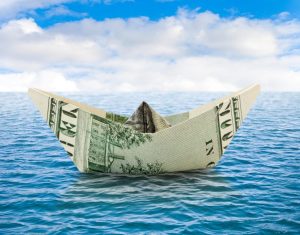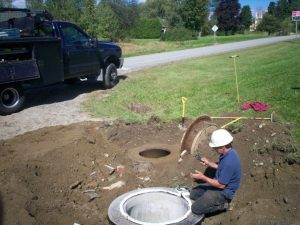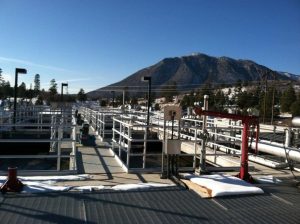Our world is an amazing place and since 1973, we have dedicated June 5th to celebrate and acknowledge our beautiful planet. The main focus of this day is to raise awareness of the importance of a healthy and green environment. Air pollution, poor water quality, and unsustainable practices with farming and consumption are just some of the issues we see everyday in the news and other media. As individuals who call Earth home, it is up to us to solve the environmental issues which we hear about all too often. Through simple and effective actions, we can all join the race to make the world a better place. Below are some unique and efficient ways to make our lives eco-friendly as we prepare to celebrate World Environment Day.
 Get Involved!
Get Involved!
As World Environment Day approaches, it is important to get outside and participate in saving our planet. Tata & Howard took initiative in the 17th annual Charles River Earth Day Cleanup in Dedham, Massachusetts. Volunteers from the company, along with 3,000 others, picked up trash along the Charles River and made a positive impact on our local environment. Everyone is encouraged to volunteer and get involved in their local communities. Visit https://www.volunteercleanup.org for local volunteering opportunities and meet some great people along the way.
Say Bye to the Bottled Water
Keeping ourselves hydrated is one of the healthiest things we can do for ourselves, but choosing bottled water may cost the environment far more than it does our wallets. Each year, 17 million gallons of oil are used in the production of bottled water. With a gallon of bottled water costing four times more than a gallon of gasoline, it is worth the thought to give tap water a chance. Here at Tata & Howard, we recognize that carrying and refilling our own water bottles with tap water is an important step in saving the environment. Drinking tap water keeps our water dollars local so that our communities can fund water improvement projects and other important water initiatives. Only one percent of Earth’s freshwater is safe for human consumption so its up to us to keep it clean and use it efficiently. For more information on reasons to choose tap water over bottled water, see the downloadable infographic below.
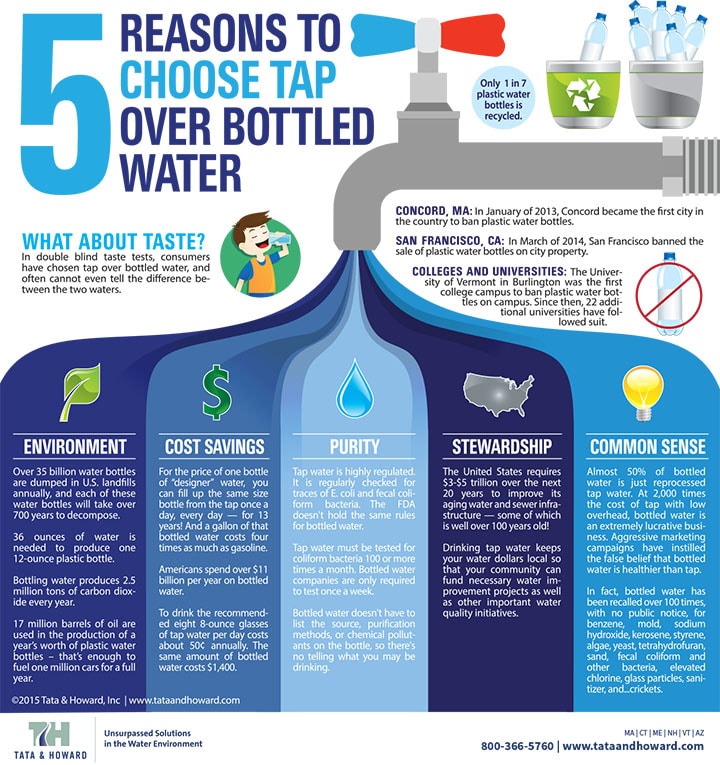
Be Mindful of Food Waste
The annual amount of food waste in the US is enough to feed one billion hungry people in the world. This food waste often ends up in landfills packed tight and covered in trash. Although most food is biodegradable, it does not biodegrade when it is piled with trash and other non biodegradable substances. Therefore, if biodegradable material is sent to a landfill, it becomes part of the problem. The best way to avoid this is to be mindful of the food we buy and consume, and to try to change our buying habits so that we waste less food. When we do need to dispose of food, the best way to do so is by composting. Composting is an excellent way to recycle unused food scraps back into a healthy environment in a controlled way. Some communities have local composting programs but it can also be done at home, even indoors.
Lack of understanding about expiration dates is also a large contributing factor to food waste in the US. Expiration dates refer to a product’s quality, not safety. We can help extend the life of perishables by keeping them at the proper storage temperature, and extra food should be donated to food banks BEFORE it reaches expiration, as food banks cannot accept expired food. Tata & Howard practices strong philanthro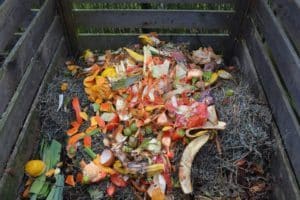 py by donating both food and money to local food banks to help feed everyone efficiently. On June 5th, Tata & Howard encourages everyone to go through their pantries and donate to a local organization for people who need it. Not only will it help save our environment, but will also help the local people in our own communities.
py by donating both food and money to local food banks to help feed everyone efficiently. On June 5th, Tata & Howard encourages everyone to go through their pantries and donate to a local organization for people who need it. Not only will it help save our environment, but will also help the local people in our own communities.
Come Together and Travel Smart
For many people, riding a bicycle or walking to work may be impossible, but there are other excellent ways we can reduce our negative impact on the environment and get where we need to go. Carpooling is a great option. Coworkers who ride to work or lunch together not only help the environment, they also enjoy quality time which leads to team building and a more positive work environment. On our off time, it makes sense to combine all of our necessary errands into one trip. Taking one big trip to get groceries, dry cleaning, and drugstore items can greatly decrease our gas emissions that pollute the air and water in the environment. Americans in recent years have begun to drive less and use other means of public transportation or physical exercise. This trend is exactly what we need to better our planet. On World Environment Day, Tata & Howard encourages everyone to practice eco-friendly transportation. Even if it is only for one day, it will make a difference.
What to Take Away
Our world is awesome but it is not perfect. Our actions of pollution and unsustainable practices are the main contributors to the very real problems that we are currently facing. Actions taken today do make a difference and the more people we can get on board to help  the better. On this World Environment Day, let’s all take time to lend a helping hand to our planet. It is up to us as individuals to take action and better our environment. Taking small steps and making an effort to improve the world in which we live is important not only on World Environment Day, but every day. Even if it is a small step, it is still a step in the right direction.
the better. On this World Environment Day, let’s all take time to lend a helping hand to our planet. It is up to us as individuals to take action and better our environment. Taking small steps and making an effort to improve the world in which we live is important not only on World Environment Day, but every day. Even if it is a small step, it is still a step in the right direction.
Happy World Environment Day!

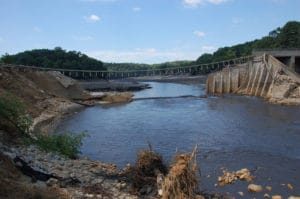

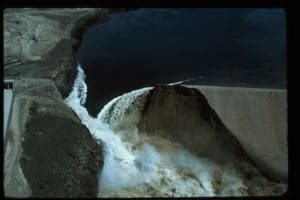
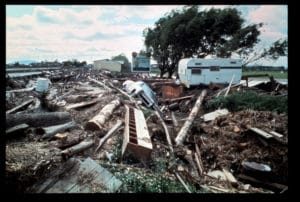
 Memorial Day is the generally accepted start of summer to most New England communities. Pools are opened, grills are wheeled out from storage, flowers are planted, and beaches are officially opened. And while summer is absolutely breathtaking in New England, it is also a time of increased stress on water quality and supply.
Memorial Day is the generally accepted start of summer to most New England communities. Pools are opened, grills are wheeled out from storage, flowers are planted, and beaches are officially opened. And while summer is absolutely breathtaking in New England, it is also a time of increased stress on water quality and supply.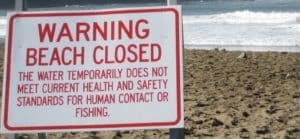 Unfortunately, because of the huge popularity of beaches in the summer, water quality can suffer. Beach closures are common during the summer months, and are a result of pollutants and pathogens entering the water. One of the most common sources of water pollution is human fecal matter from leaky septic systems and sewer overflows. Human waste contains a variety of harmful organisms, including bacteria, viruses, and parasites, that can cause illnesses such as gastroenteritis, hepatitis, and skin infection to humans. Another source of pollution is animal fecal matter from agricultural and stormwater runoff. While runoff contains a number of pollutants including motor oil, pesticides, fertilizers, and trash, arguably the most dangerous and disruptive is animal feces. A single gram of dog feces contains over 23 million parvovirus bacteria in addition to whipworms, hookworms, roundworms, threadworms, giardia, and coccidian. These pathogens and parasites enter waterways through runoff and can have detrimental effects on waterways, aquatic life, and humans.
Unfortunately, because of the huge popularity of beaches in the summer, water quality can suffer. Beach closures are common during the summer months, and are a result of pollutants and pathogens entering the water. One of the most common sources of water pollution is human fecal matter from leaky septic systems and sewer overflows. Human waste contains a variety of harmful organisms, including bacteria, viruses, and parasites, that can cause illnesses such as gastroenteritis, hepatitis, and skin infection to humans. Another source of pollution is animal fecal matter from agricultural and stormwater runoff. While runoff contains a number of pollutants including motor oil, pesticides, fertilizers, and trash, arguably the most dangerous and disruptive is animal feces. A single gram of dog feces contains over 23 million parvovirus bacteria in addition to whipworms, hookworms, roundworms, threadworms, giardia, and coccidian. These pathogens and parasites enter waterways through runoff and can have detrimental effects on waterways, aquatic life, and humans.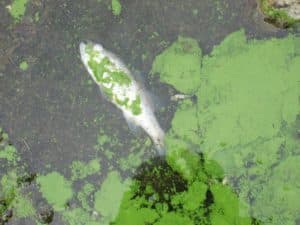
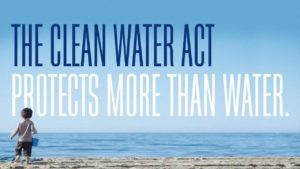 Fortunately, there are policies and regulations in place that directly address seasonal water quality and quantity issues. The EPA, along with other governmental agencies, have enacted several laws that aim to protect the quality of our nation’s beaches:
Fortunately, there are policies and regulations in place that directly address seasonal water quality and quantity issues. The EPA, along with other governmental agencies, have enacted several laws that aim to protect the quality of our nation’s beaches: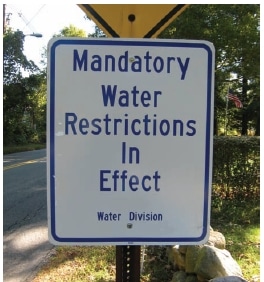 Outdoor water restrictions and bans: Many communities implement water bans in the summer that severely limit or prohibit outdoor watering.
Outdoor water restrictions and bans: Many communities implement water bans in the summer that severely limit or prohibit outdoor watering.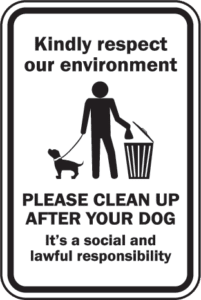 Beaches are one of the most traditional and enjoyable means of summer entertainment for families and individuals, and they provide a plethora of recreational activities for all ages. Protecting our beaches and recreational waters is imperative to the health of our nation’s citizens and economy, and we are fortunate that our nation’s governmental agencies and local communities proactively work to maintain the health of our waters. We as individuals can also help to protect our beaches and waterways by reducing our personal water consumption, cleaning up after our pets, and being mindful of pesticide and fertilizer usage. Together, we can assure that present and future generations are able to enjoy our nation’s beautiful beaches.
Beaches are one of the most traditional and enjoyable means of summer entertainment for families and individuals, and they provide a plethora of recreational activities for all ages. Protecting our beaches and recreational waters is imperative to the health of our nation’s citizens and economy, and we are fortunate that our nation’s governmental agencies and local communities proactively work to maintain the health of our waters. We as individuals can also help to protect our beaches and waterways by reducing our personal water consumption, cleaning up after our pets, and being mindful of pesticide and fertilizer usage. Together, we can assure that present and future generations are able to enjoy our nation’s beautiful beaches.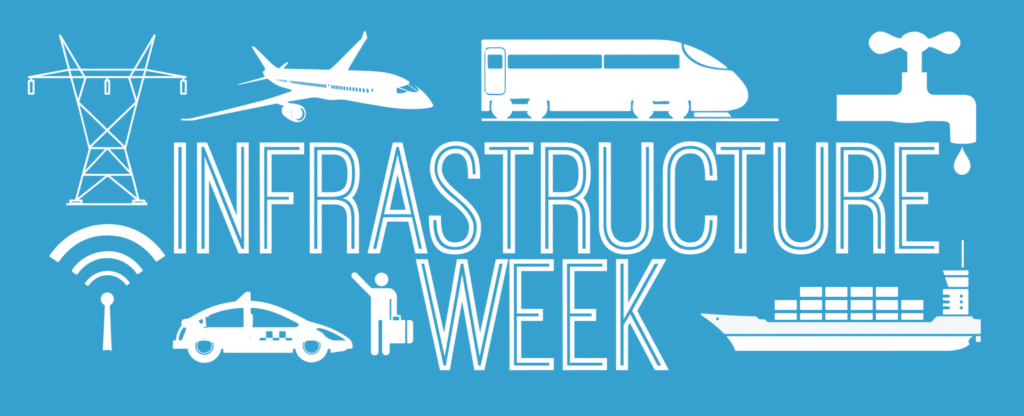 It is scary to realize how complacent our country has become in accepting crumbling infrastructure as the norm. Our international competitors are investing more in high speed rail, modern airports, and bigger shipping ports, while just about every few months, some kind of preventable catastrophic infrastructure event happens in America. Yet our leaders are still not spurred into taking decisive action.
It is scary to realize how complacent our country has become in accepting crumbling infrastructure as the norm. Our international competitors are investing more in high speed rail, modern airports, and bigger shipping ports, while just about every few months, some kind of preventable catastrophic infrastructure event happens in America. Yet our leaders are still not spurred into taking decisive action.

 During Infrastructure Week, groups are coming together to recognize progress and leadership at the federal, state, and local levels – and there is much to celebrate. For example, communities throughout New England have been proactive in lead service line replacement, and the Massachusetts Water Resources Authority
During Infrastructure Week, groups are coming together to recognize progress and leadership at the federal, state, and local levels – and there is much to celebrate. For example, communities throughout New England have been proactive in lead service line replacement, and the Massachusetts Water Resources Authority  The first known dam to be built is the Jawa Dam, which is actually the largest in a series of dams that are all part of one reservoir system. Located in modern-day Jordan, the Jawa Dam was originally constructed around 3,000 BCE in what was then Mesopotamia. Surprisingly, the Jawa Dam was actually an architectural feat of the times. While most ancient dams were simple gravity dams constructed of gravel and masonry, the Jawa Dam was reinforced with rock fill behind the upstream wall in order to protect the wall from water pressure breach. This safety feature was incredibly innovative for this time period. Unfortunately, the reinforced design was forgotten after the Jawa Dam and was not actually “reinvented” until modern times. The Jawa Dam site is arguably the most important archaeological site in the history of large-scale water projects, and the dam itself was so well designed and constructed that the ancient structure stood until just a few years ago, when it was partially ruined due to physical intervention. In its prime, the Jawa Dam was 15 feet tall, 80 feet long, with a base of 15 feet. It created the Jawa Reservoir that had a capacity of 1.1 million cubic feet.
The first known dam to be built is the Jawa Dam, which is actually the largest in a series of dams that are all part of one reservoir system. Located in modern-day Jordan, the Jawa Dam was originally constructed around 3,000 BCE in what was then Mesopotamia. Surprisingly, the Jawa Dam was actually an architectural feat of the times. While most ancient dams were simple gravity dams constructed of gravel and masonry, the Jawa Dam was reinforced with rock fill behind the upstream wall in order to protect the wall from water pressure breach. This safety feature was incredibly innovative for this time period. Unfortunately, the reinforced design was forgotten after the Jawa Dam and was not actually “reinvented” until modern times. The Jawa Dam site is arguably the most important archaeological site in the history of large-scale water projects, and the dam itself was so well designed and constructed that the ancient structure stood until just a few years ago, when it was partially ruined due to physical intervention. In its prime, the Jawa Dam was 15 feet tall, 80 feet long, with a base of 15 feet. It created the Jawa Reservoir that had a capacity of 1.1 million cubic feet.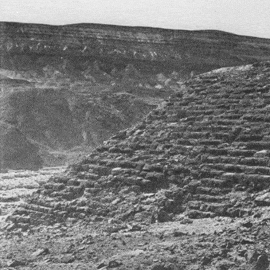
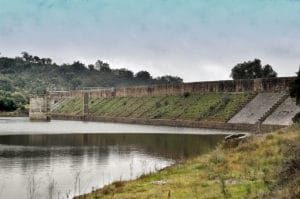

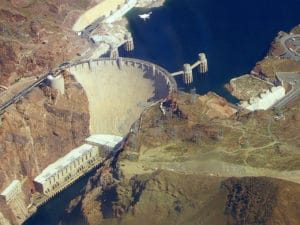

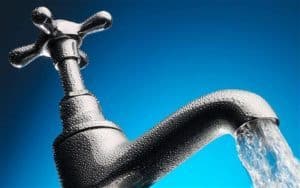 Water utilities today are faced with a unique set of difficulties. Population growth has resulted in unprecedented demand while climate change has caused supply to dwindle. Increased regulations have forced utilities to invest more and more capital into treatment while budgets have shrunk. In addition, our nation’s aging infrastructure has forced water utilities to heavily invest in repair and replacement of the distribution system. Therefore, it has become critical that utilities utilize the most cost-effective and efficient methodologies in order to maintain and improve their water systems.
Water utilities today are faced with a unique set of difficulties. Population growth has resulted in unprecedented demand while climate change has caused supply to dwindle. Increased regulations have forced utilities to invest more and more capital into treatment while budgets have shrunk. In addition, our nation’s aging infrastructure has forced water utilities to heavily invest in repair and replacement of the distribution system. Therefore, it has become critical that utilities utilize the most cost-effective and efficient methodologies in order to maintain and improve their water systems.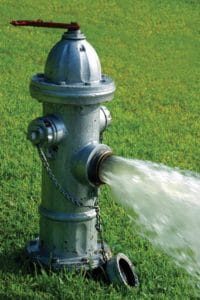
 Because demand is highest in summer and would make flushing impractical, and low temperatures in winter would cause unsafe conditions from flushed water freezing on roadways and sidewalks, flushing is typically performed in the spring and fall. Currently, Tata & Howard is assisting the communities of Haverhill and Manchester By The Sea, MA and Norwalk First Taxing District in Norwalk, CT with their annual UDF Programs. Both AWWA and MassDEP recommend that UDF be performed on an annual basis, at a minimum. If a distribution system is too large to perform UDF annually, flushing should instead be scheduled in rotation so that all parts of the distribution system are exercised on a regular basis.
Because demand is highest in summer and would make flushing impractical, and low temperatures in winter would cause unsafe conditions from flushed water freezing on roadways and sidewalks, flushing is typically performed in the spring and fall. Currently, Tata & Howard is assisting the communities of Haverhill and Manchester By The Sea, MA and Norwalk First Taxing District in Norwalk, CT with their annual UDF Programs. Both AWWA and MassDEP recommend that UDF be performed on an annual basis, at a minimum. If a distribution system is too large to perform UDF annually, flushing should instead be scheduled in rotation so that all parts of the distribution system are exercised on a regular basis.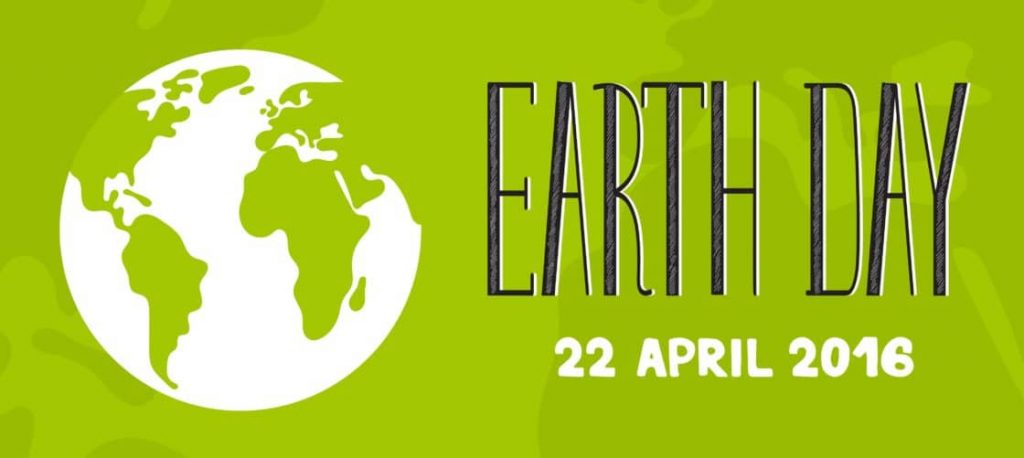 Earth Day, which falls on April 22 each year, is celebrated globally by over one billion people and is largely credited with being the catalyst for the modern environmental movement. The first Earth Day was celebrated in the United States in 1970, and was quickly followed by passage of the
Earth Day, which falls on April 22 each year, is celebrated globally by over one billion people and is largely credited with being the catalyst for the modern environmental movement. The first Earth Day was celebrated in the United States in 1970, and was quickly followed by passage of the 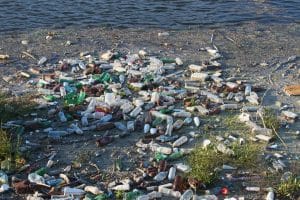
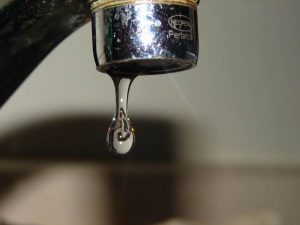 4. Repair leaky faucets and toilets
4. Repair leaky faucets and toilets
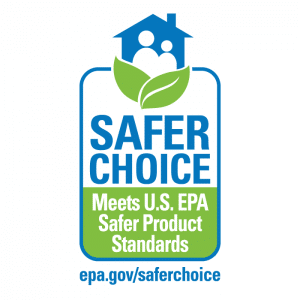


 While cell phone usage is admittedly the biggest culprit, distracted driving includes ANY activity that diverts a driver’s attention. The three main types of distraction are as follows:
While cell phone usage is admittedly the biggest culprit, distracted driving includes ANY activity that diverts a driver’s attention. The three main types of distraction are as follows: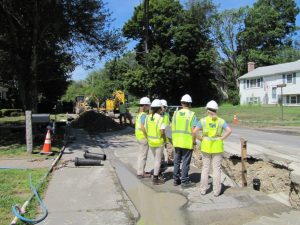
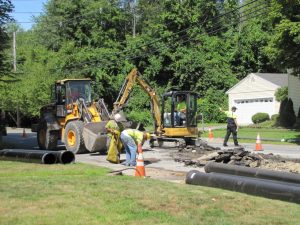
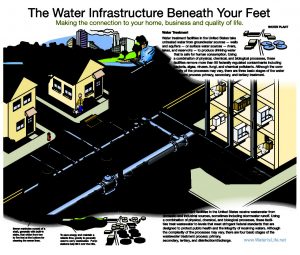
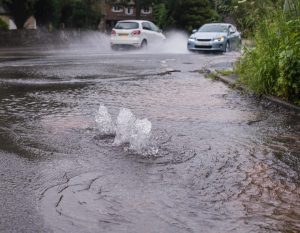
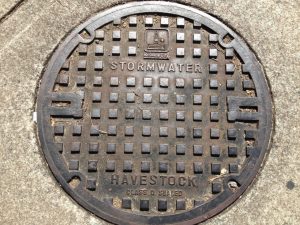 Established by the 1987 amendments to the Clean Water Act, the CWSRF Program is a federal-state partnership that provides a permanent, independent source of low-cost financing to communities for a wide range of water quality infrastructure projects. The program is a powerful partnership between EPA and the states that gives states the flexibility to fund a range of projects that address their highest priority water quality needs.
Established by the 1987 amendments to the Clean Water Act, the CWSRF Program is a federal-state partnership that provides a permanent, independent source of low-cost financing to communities for a wide range of water quality infrastructure projects. The program is a powerful partnership between EPA and the states that gives states the flexibility to fund a range of projects that address their highest priority water quality needs.